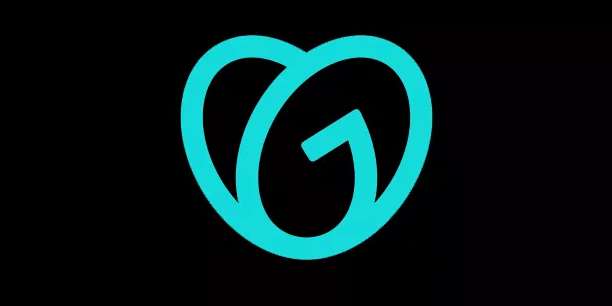Chargebacks can feel like a headache, especially if you’re not sure why they’re happening or how to respond. But with a solid understanding of the chargeback process, you can stay one step ahead. This guide covers everything you need to know, including the chargeback definition, common chargeback reasons, what to expect during a chargeback dispute, and how to protect your business moving forward.
Keeping customers happy is always the goal, but it’s just as important to know how to handle situations when a customer disputes or questions a sale.
Related: How to become an entrepreneur
What is a chargeback?
A chargeback is a payment reversal that happens when a customer disputes a transaction through their bank or credit card company. Typically, cardholders have between 90-120 days to dispute a charge. Instead of contacting the business directly to ask for a refund, the customer requests that their card issuer investigate and take action. If the bank finds the claim valid, the transaction is reversed and the funds are pulled from the business’s account and returned to the customer. However, if the seller disputes the chargeback and wins the dispute, the money is taken back from the cardholder.
Chargebacks were originally introduced as a way to protect consumers from fraud and unauthorized purchases. Over time, they’ve also become a common way for customers to resolve issues like shipping problems, unresponsive support, or dissatisfaction with a product.
Types of chargebacks
Most chargebacks fall into one of two categories: fraudulent or non-fraudulent. Each type of chargeback tells a story about what went wrong in the transaction. Understanding the difference between types of chargebacks can help you respond more effectively, improve your customer experience, and build systems that prevent future disputes before they start.
Fraudulent chargebacks
Fraudulent chargebacks happen when a customer claims they didn’t authorize a purchase. This could be the result of true credit card fraud, where someone’s payment details were stolen and used without permission, or it could be chargeback fraud (sometimes called friendly fraud), where a customer makes a legitimate purchase and later disputes it to get their money back.
This could look something like a customer buying a digital product, downloading it, then filing a chargeback with their bank or credit card issuer and claiming they never made the purchase. You lose the sale and may also be hit with a chargeback fee, despite the transaction being legitimate.
Note: A chargeback dispute through GoDaddy Payments incurs a $15 chargeback fee.
Non-fraudulent chargebacks
Non-fraudulent chargebacks are usually tied to customer dissatisfaction. In these cases, the purchase was authorized and legitimate, but something happened after the sale that made the customer unhappy. Instead of requesting a return or contacting your team, they went straight to their bank to file a dispute.
Let’s say a customer orders a jacket, but it arrives in the wrong size, and they can’t get in touch with your support team. Maybe the contact info on your site is outdated, or the return process isn’t clear. Instead of waiting for help, they dispute the charge and get their bank involved. These chargebacks are often avoidable with a few improvements to your post-purchase experience.
Chargeback process: How do chargebacks work?
When a customer files a chargeback, it kicks off a formal review process that involves banks, payment processors, and sometimes, you. While the exact chargeback process can vary by the banking institution or credit card company, it typically looks something like this:
- The purchase is made: A customer buys something from your business using a credit or debit card. This could happen through your website, in person, or another sales channel. Understanding the basics of credit card processing can help you spot where issues might pop up.
- The customer files a chargeback: Instead of contacting you for a refund, the customer goes to their bank or card issuer and requests a chargeback. They’ll choose a reason, like “item not received” or “unauthorized transaction.”
- The bank or credit card company reviews the claim: The customer’s bank or credit card company looks into the request to see if it’s valid. If it meets the criteria, they move forward and temporarily pull the funds from your business bank account.
- You’re notified of the dispute: You’ll receive a notice from your payment processor with the chargeback details. This is your chance to review the claim and gather any evidence that supports your side.
- Submit your response and evidence: If you want to fight the chargeback, you’ll need to provide proof that the transaction was legitimate. This might include order confirmations, delivery tracking, correspondence with the customer, or receipts. However, you're not required to fight the chargeback. If you do not wish to dispute the transaction, you can accept the chargeback instead.
- Wait for the outcome: After you submit your response, the bank or credit card company takes time to review both sides. If they rule in your favor, the funds may be returned to your account. If not, the chargeback stands, and you’re out the sale.
Be aware that there can be additional steps in this process, depending on your individual situation. For example, if the bank is not able to make a determination, the chargeback will go to arbitration with the card brand for a final review. There are additional fees required when arbitration occurs, which will also depend on the card issuer policies.
Related: How to accept payments online
How to dispute chargebacks
If you believe a chargeback isn’t valid, you can dispute (or challenge) it. However, time is limited; most banks and credit card companies only give merchants 25-40 days to dispute them. The process to dispute a chargeback is different for every financial institution, but it generally involves:
- Reviewing the chargeback notice: As soon as you’re notified of a chargeback, read through the details. The reason code from the customer’s bank or credit card company will help you understand why the chargeback was filed and what kind of evidence you’ll need to respond.
- Gathering your evidence: Collect everything that supports your case. This could include order confirmations, invoices, tracking numbers, proof of delivery, customer emails, or refund policy terms. Be clear, organized, and specific.
- Submitting your response: Follow your payment processor’s instructions to upload your evidence and submit your dispute. The format and deadlines may vary depending on the card network, so don’t wait too long.
- Track the dispute status: After you submit your case, the bank or credit card company reviews the evidence and makes a final decision. It can take several weeks, so stay in the loop on any updates or requests for more information.
GoDaddy makes this process easier by offering a Chargeback and Dispute Management Dashboard inside Commerce Home. You can accept or challenge disputes, upload evidence, and track the status all in one place. Learn how to manage disputes with GoDaddy Payments.
How can I prevent chargebacks?
You can’t avoid every chargeback, but you can take steps to reduce the risk. Most chargebacks happen because of misunderstandings, unclear policies, or gaps in your payment process. Putting a few simple practices in place and leveraging customer feedback can help protect your sales and build better trust from the start.
- Use secure payment systems: Make sure your checkout process is protected with a reliable, up-to-date payment gateway. This helps you spot suspicious activity and keep your transactions safe. Learn what a payment gateway is and how it works.
- Get an SSL certificate: An SSL certificate encrypts customer data and shows visitors that your ecommerce site is secure. It’s a small investment that builds confidence during checkout and protects sensitive information. Get an SSL certificate to help protect your site and your customers.
- Be clear about your return and refund policies: Keep your policies visible and easy to understand. Customers are less likely to go to their bank if they know exactly how to return an item or request a refund directly from you.
- Send order confirmations and shipping updates: Automated emails with tracking info and delivery updates keep your customers in the loop. That transparency helps prevent disputes over lost or delayed packages.
- Use recognizable billing descriptors: Make sure the name that appears on your customer’s credit card statement matches your business name. Confusing or unfamiliar descriptors are a common reason customers file chargebacks.
- Train your team on secure in-person transactions: If you’re selling in person, using a reliable tool like the GoDaddy POS system ensures smoother transactions. It’s also important to train your team to follow security best practices, like checking ID or verifying signatures when needed.
- Offer different payment methods: Giving customers a choice — like credit cards, digital wallets, or contactless payments — can build confidence and reduce frustration.
- Respond quickly to customer questions or complaints: A fast, friendly reply can stop a frustrated customer from filing a chargeback. Keep support channels open and monitor messages regularly, especially during high-volume periods.
- Keep detailed records: Save copies of receipts, tracking info, order confirmations, and customer messages. If a dispute does happen, this documentation can help you win the case.
- Monitor chargeback patterns: Keep an eye on your chargeback rate and look for patterns. Are disputes coming from a specific product, payment method, or location? Identifying trends early can help you adjust your process and prevent future issues.
- Keep product descriptions accurate: Make sure product listings are clear, detailed, and up to date. If what the customer receives doesn’t match what they saw online, you risk a dispute, even if the transaction was processed correctly.
Chargebacks vs refund
A chargeback is a payment reversal initiated by the customer through their bank, while a refund is a return of funds issued directly by the business to the customer. They share the goal of the customer getting their money back, but they work in very different ways.
Chargebacks are more formal and often involve extra fees and potential damage to your reputation. Refunds, on the other hand, are handled privately between you and your customer. They are often the best solution for everyone involved because they keep customers happy and protect your business from extra costs.
| Feature | Chargeback | Refund |
|---|---|---|
| Who initiates it | Customer via their bank | Merchant via their own payment system |
| Fees | Chargeback fees may apply, depending on the companies and financial institutions involved | Usually no additional fees |
| Process | Goes through banks and processors | Handled directly with the customer |
| Processing time | Can take weeks or months | Typically a few days |
| Merchant outcome | Potential loss of sales, extra fees, and hurt reputation | May help preserve customer relationship |
The impact of chargebacks on the business (fees and other costs)
Chargebacks aren’t just a temporary inconvenience—they can take a real toll on your business. Beyond the lost revenue from the sale itself, you may also face chargeback fees, extra processing costs, and even penalties if your chargeback rate gets too high. Over time, too many disputes can lead to higher payment processing rates or even a frozen merchant account.
Chargebacks can also hurt your brand reputation, especially if they stem from preventable issues like unclear policies or slow customer support. Customers are more likely to trust businesses that communicate clearly and make it easy to resolve problems without going through their bank.
The good news? You can minimize the risk by staying informed, tracking your chargeback activity, and building strong policies around communication, fulfillment, and refunds. GoDaddy helps make that easier with secure payment processing solutions and built-in tools to manage disputes, track activity, and stay ahead of issues before they cost you.
FAQs about chargebacks
What is the most common chargeback type?
The most common type of chargeback is fraud-related. This is when a customer claims they didn’t authorize the purchase. It includes both true fraud (like stolen card info) and “friendly fraud,” where a customer forgets the charge or decides to dispute it instead of requesting a refund.
Do companies get charged for a chargeback?
Most businesses are charged a chargeback fee by their payment processor each time a chargeback is filed. These fees vary by provider and are charged even if you end up winning the dispute, so it’s important to prevent unnecessary chargebacks whenever possible.
Who decides who wins a chargeback?
The customer’s bank or credit card issuer makes the final call on a chargeback. After reviewing the claim and any supporting evidence from both sides, the bank decides whether to return the funds to the customer or let the merchant keep the payment.
Can a chargeback be refunded?
Once a chargeback is in motion, you can’t issue a standard refund. Instead, you can respond with evidence to dispute the chargeback or choose not to challenge it. If the bank rules in your favor, the funds may be returned to your account, but it’s not considered a refund.







